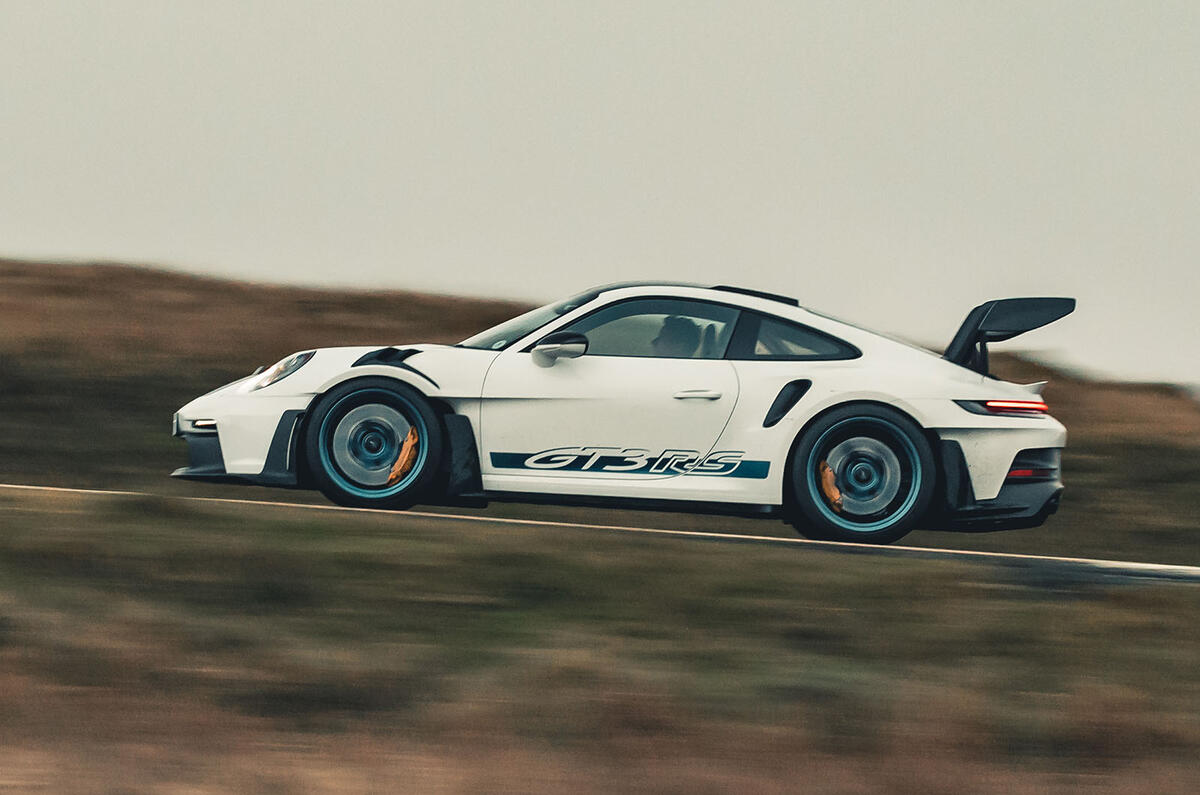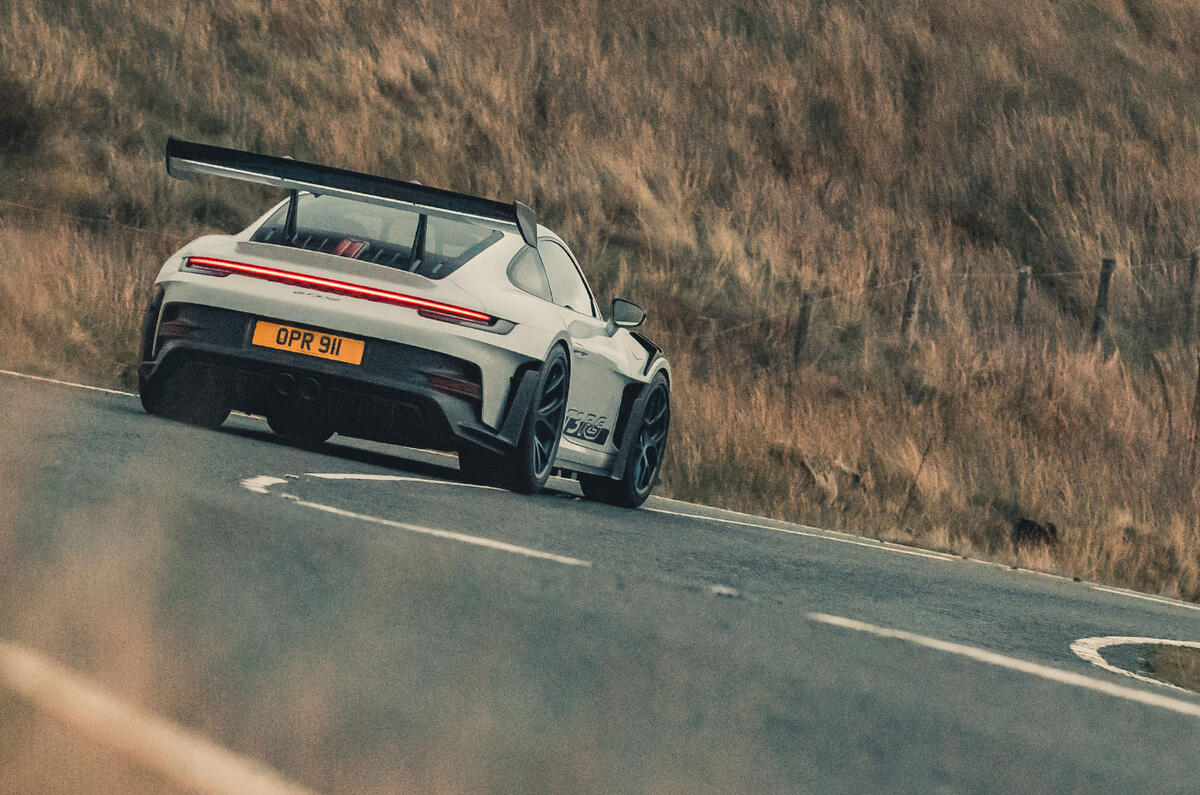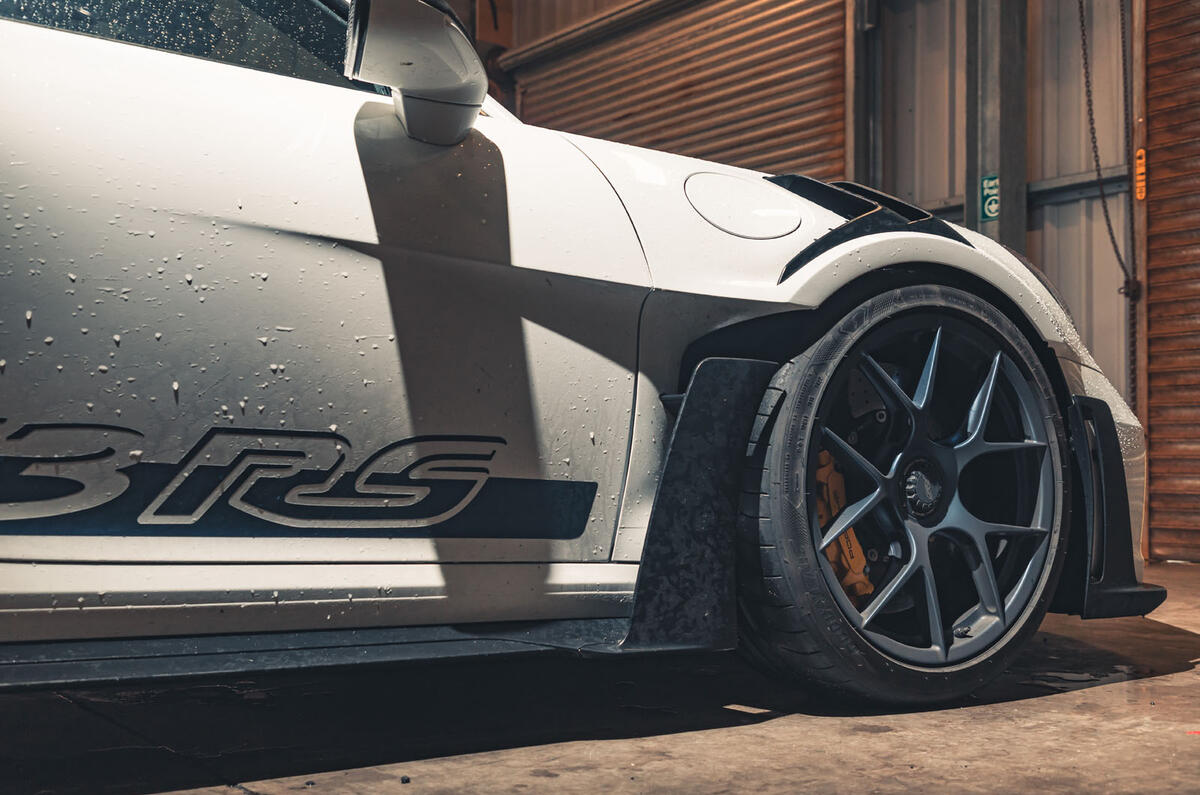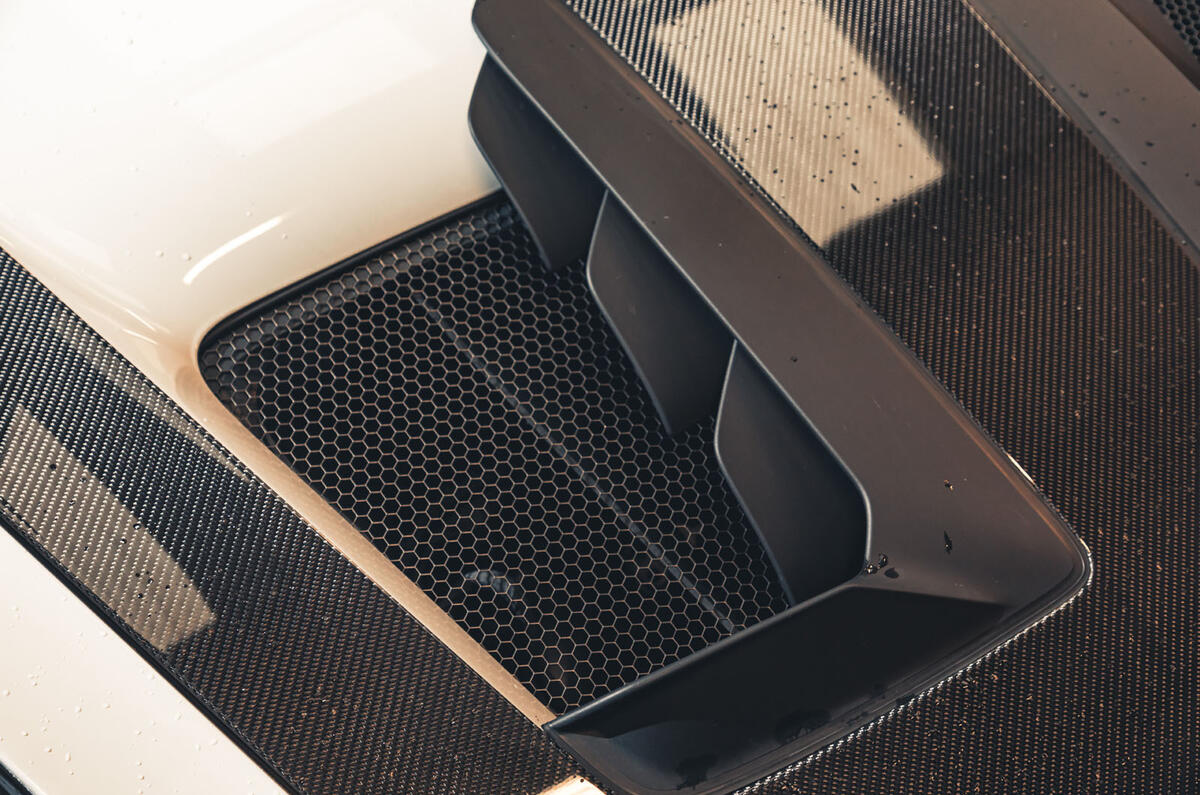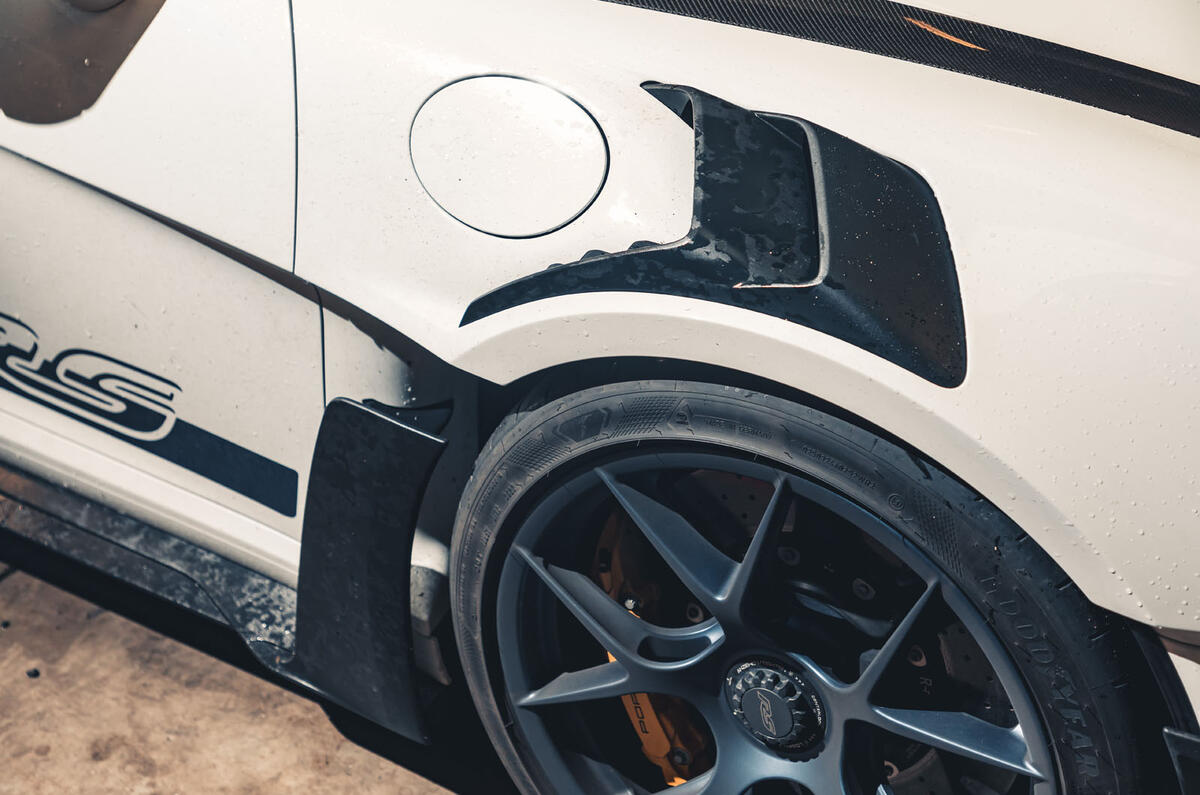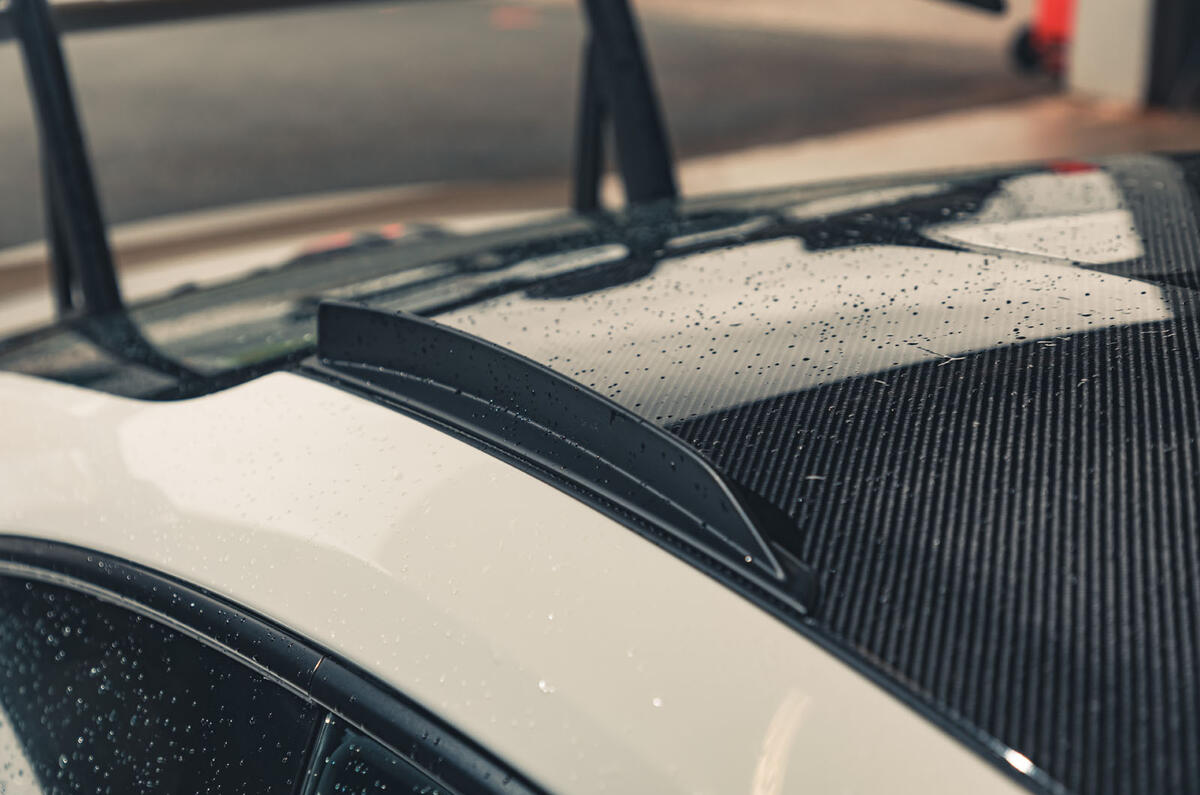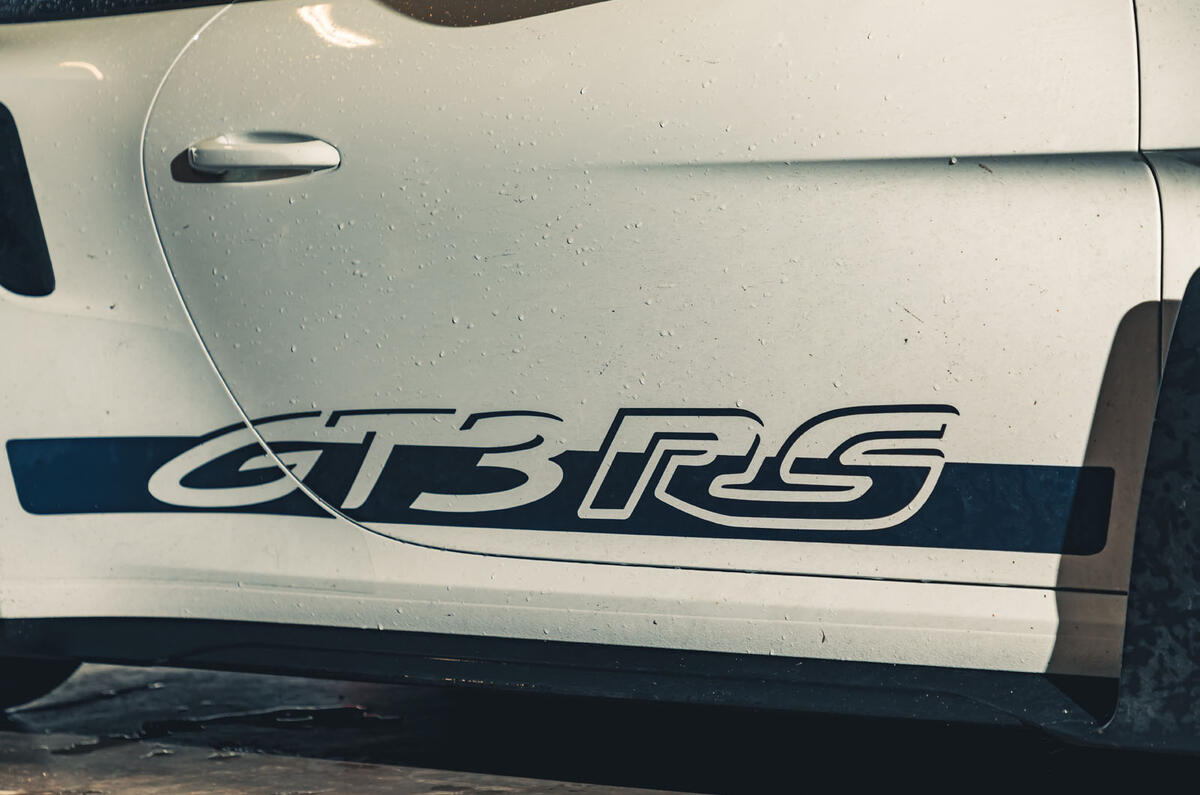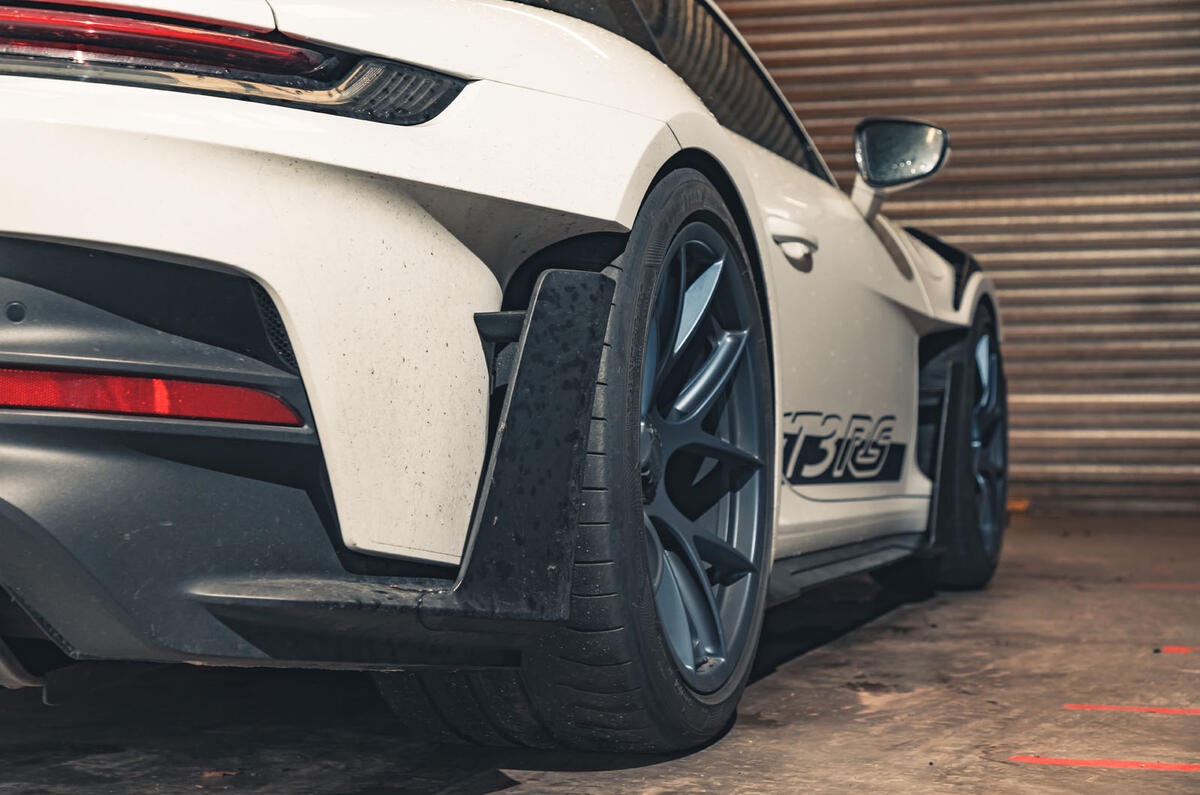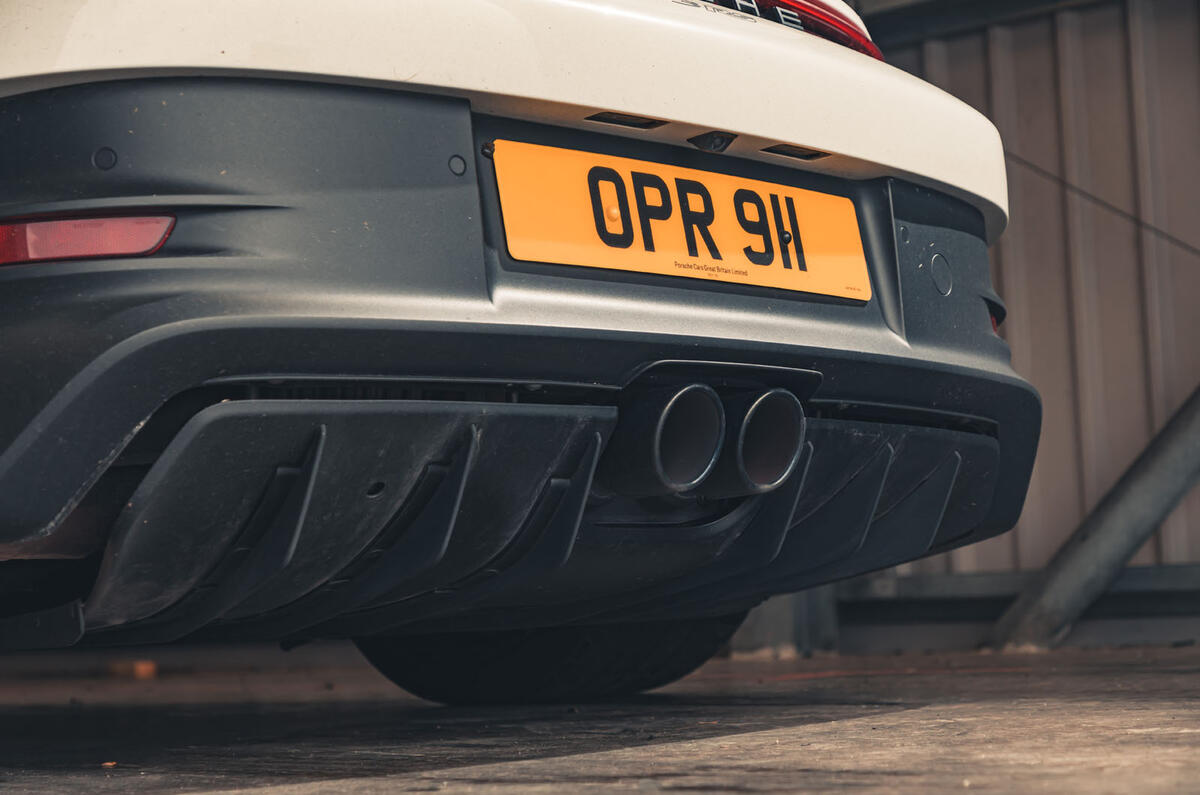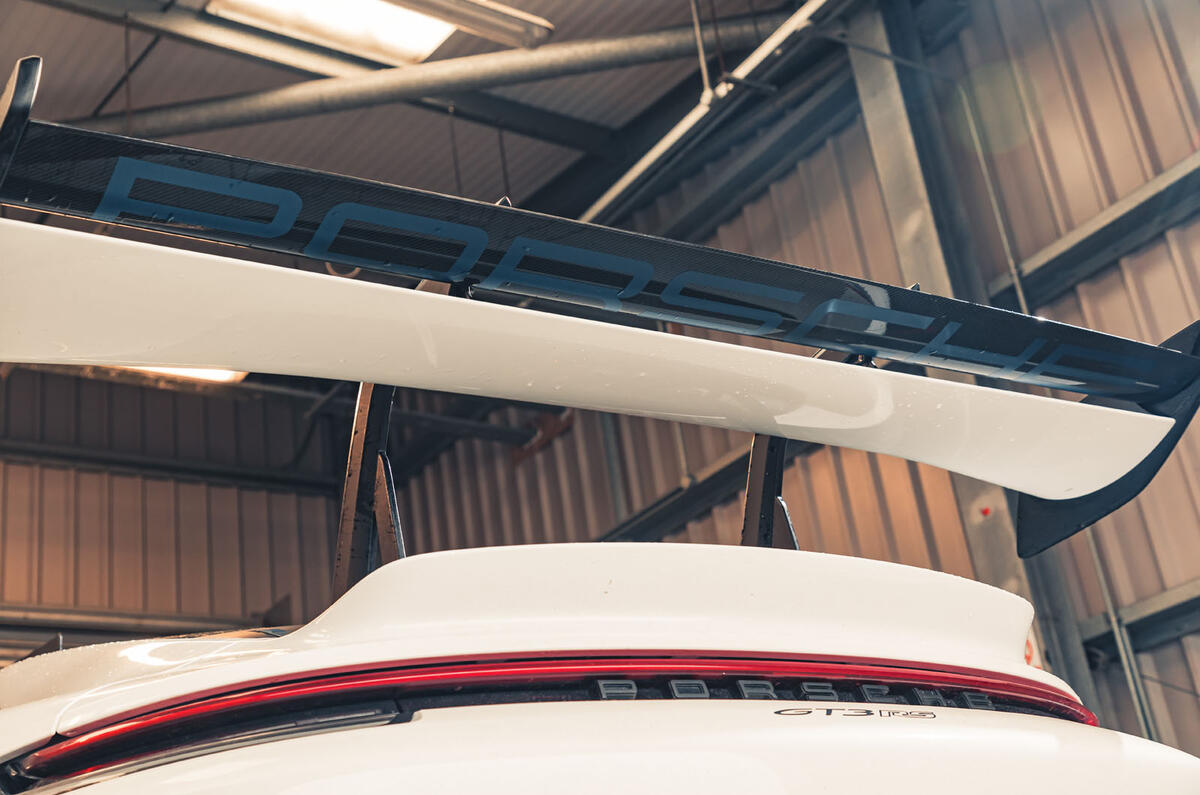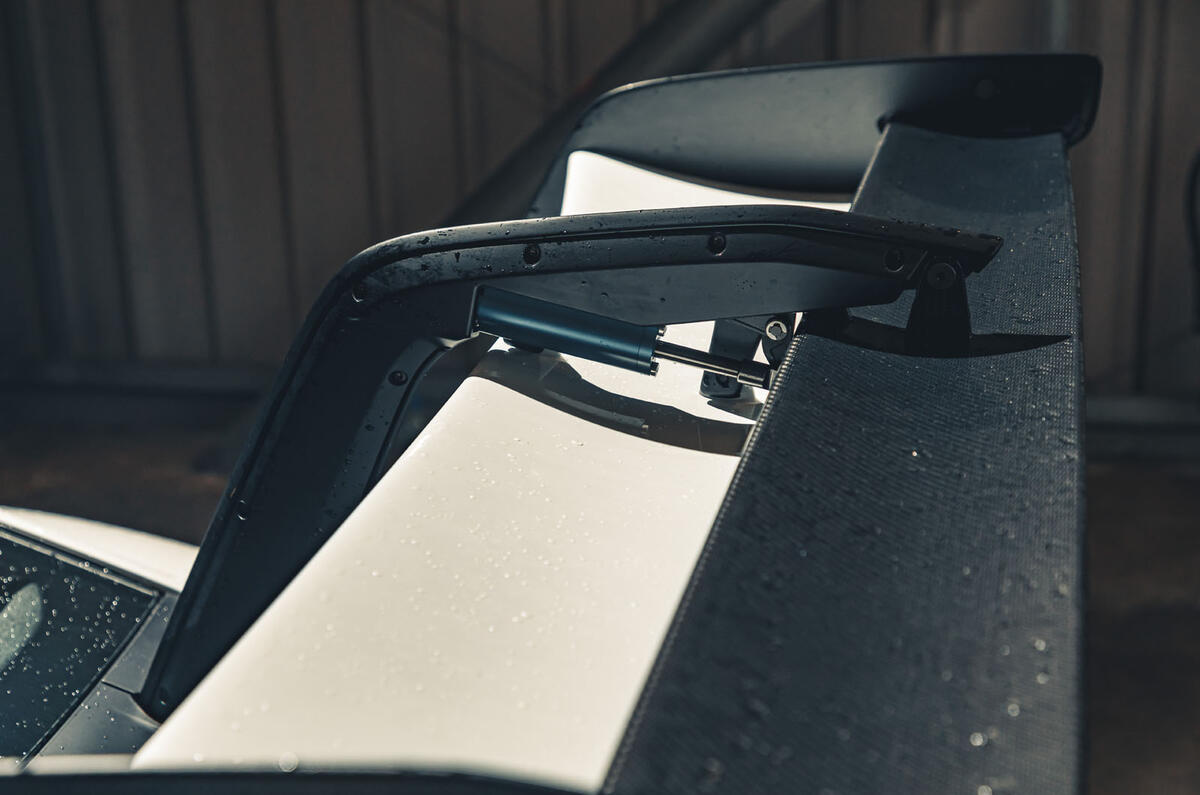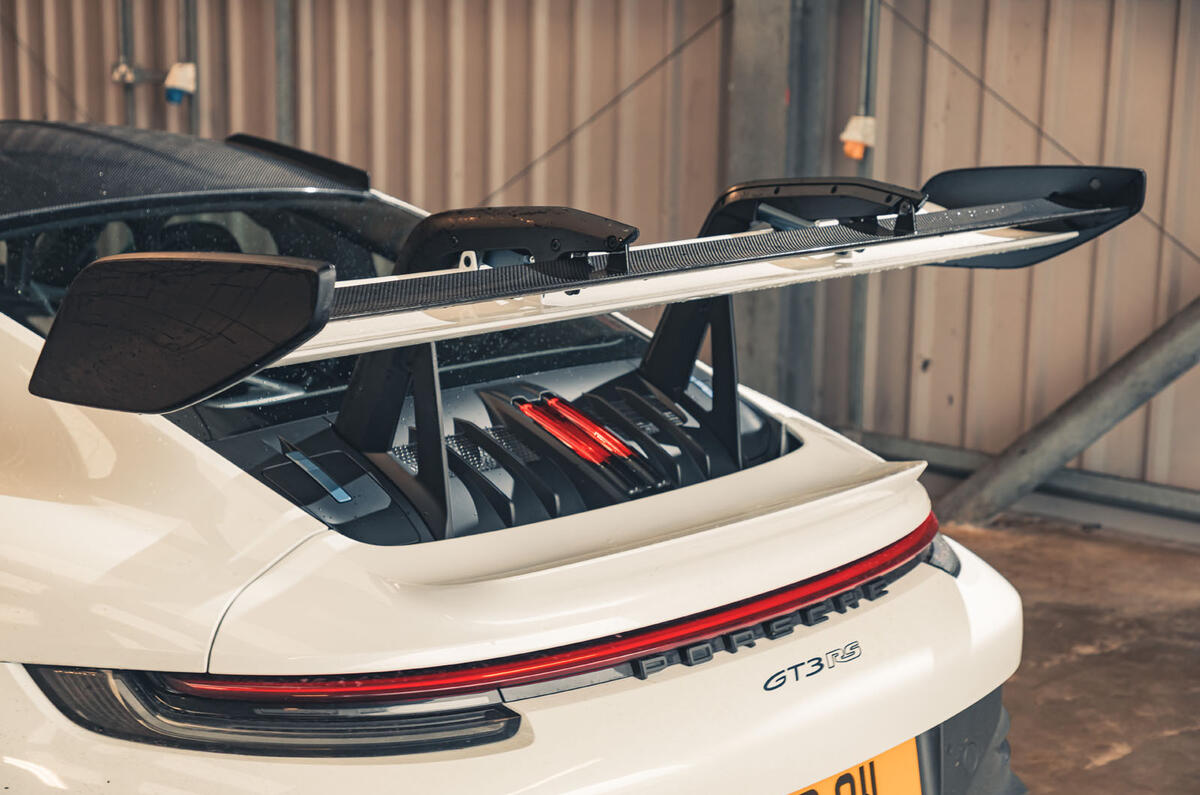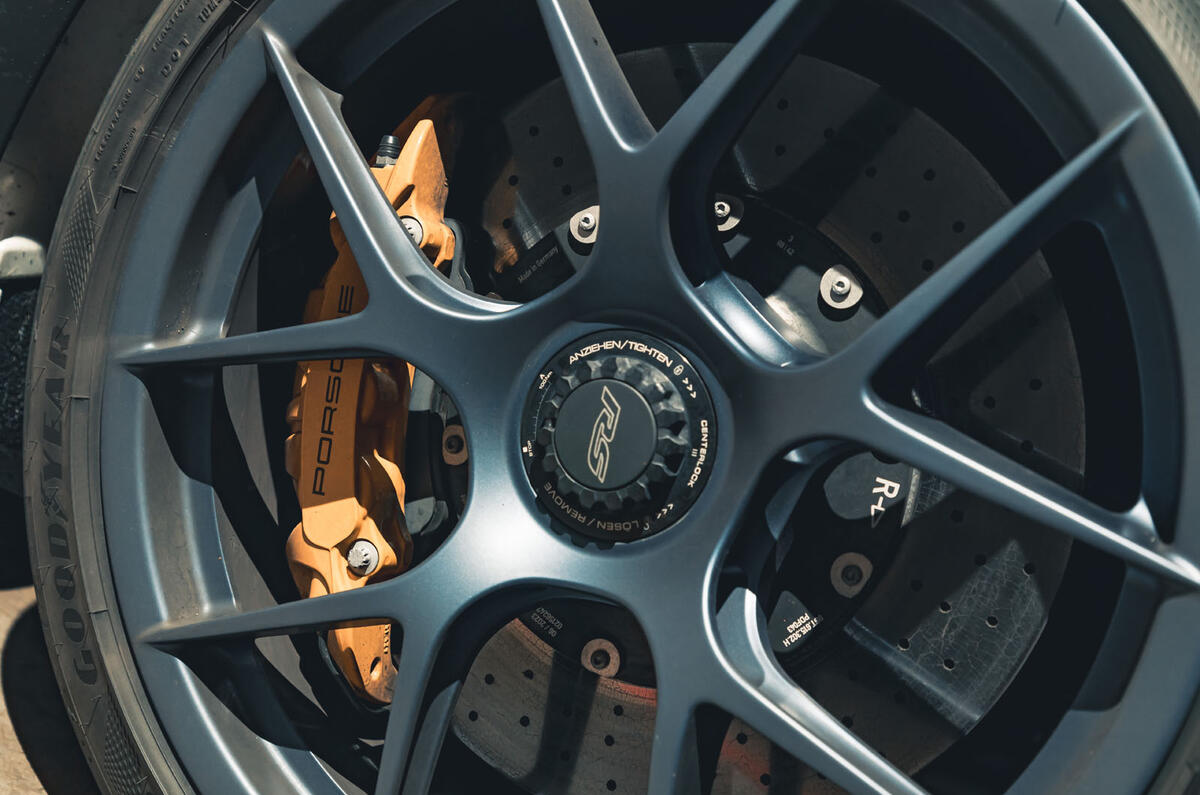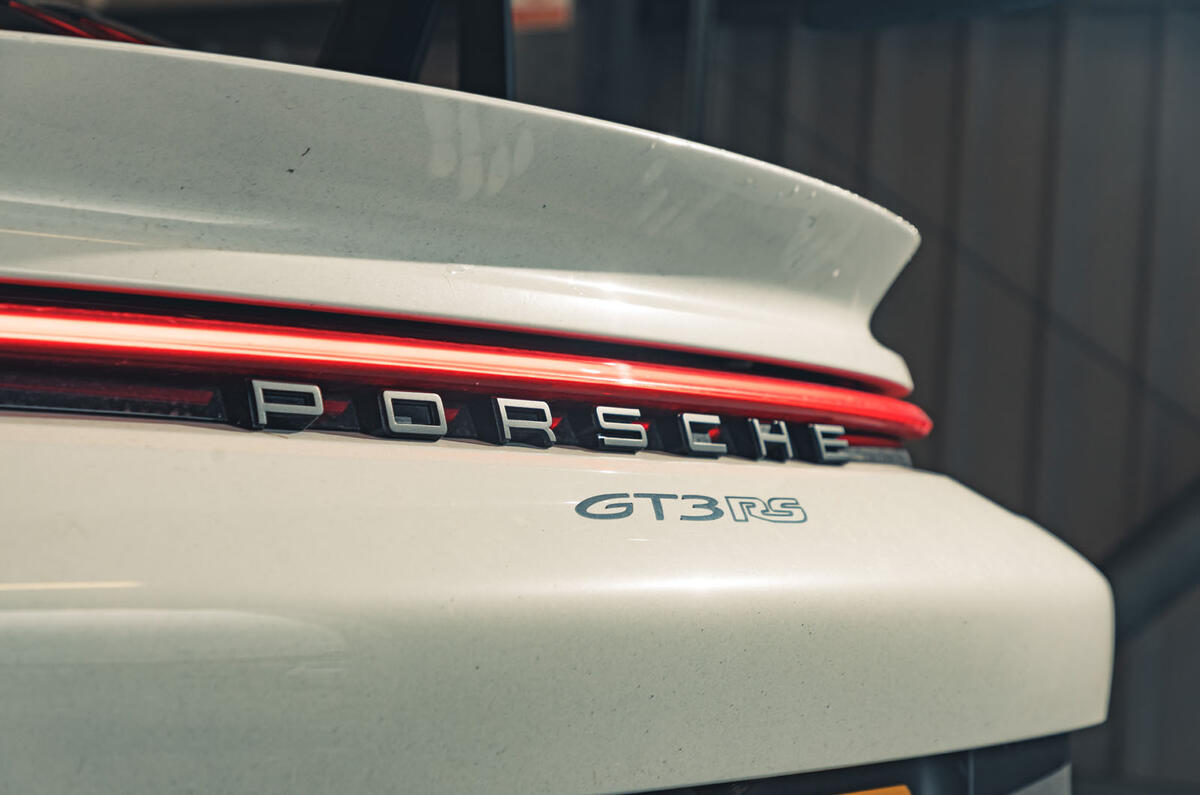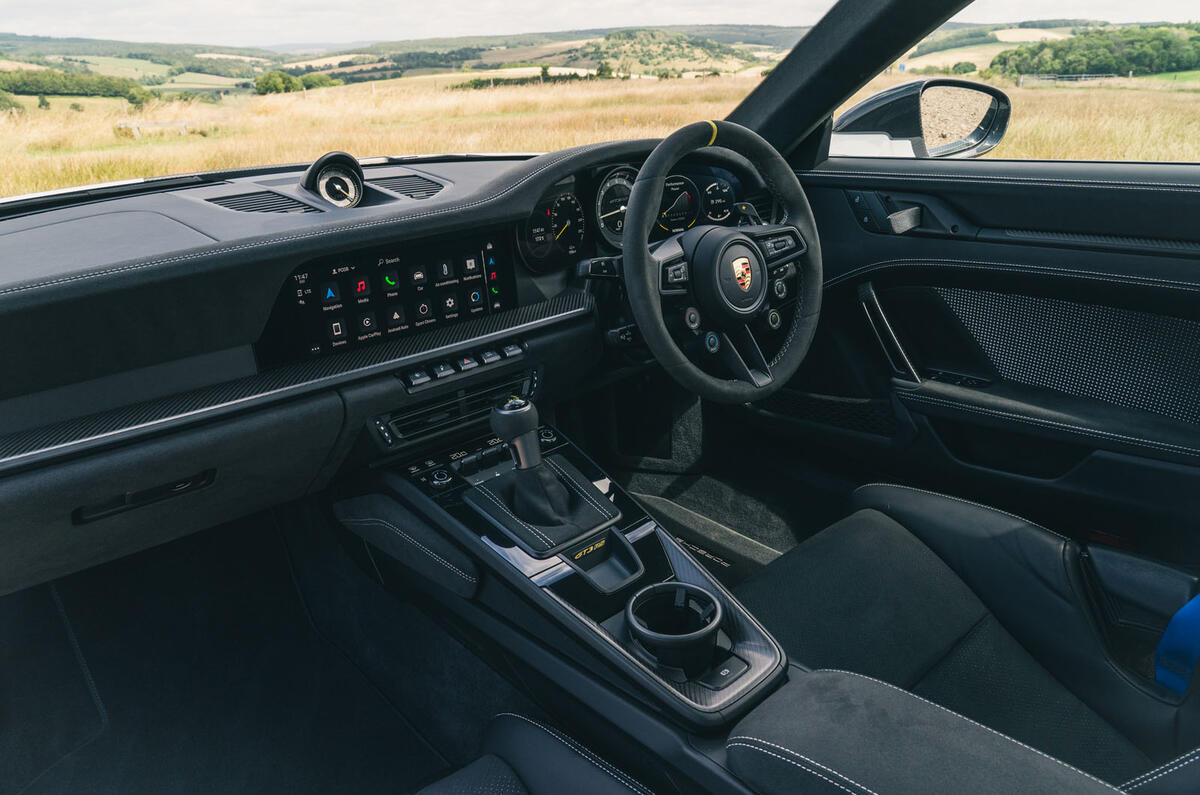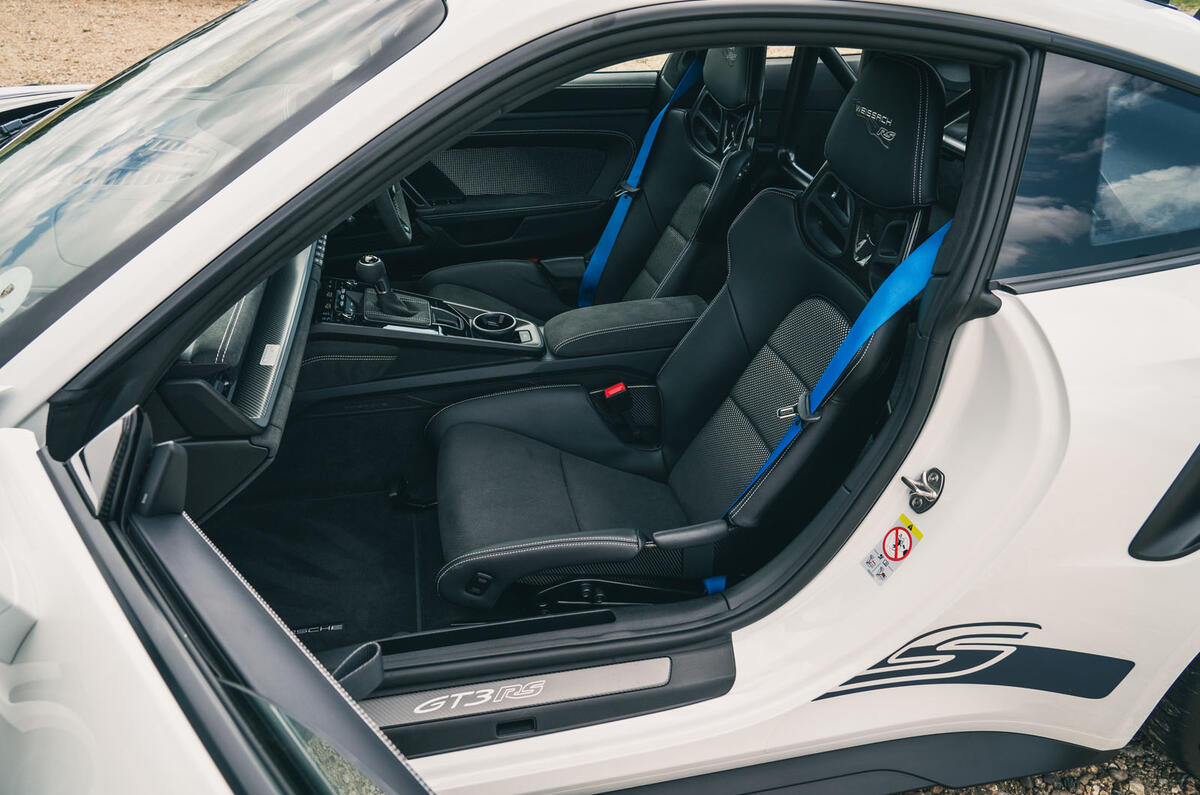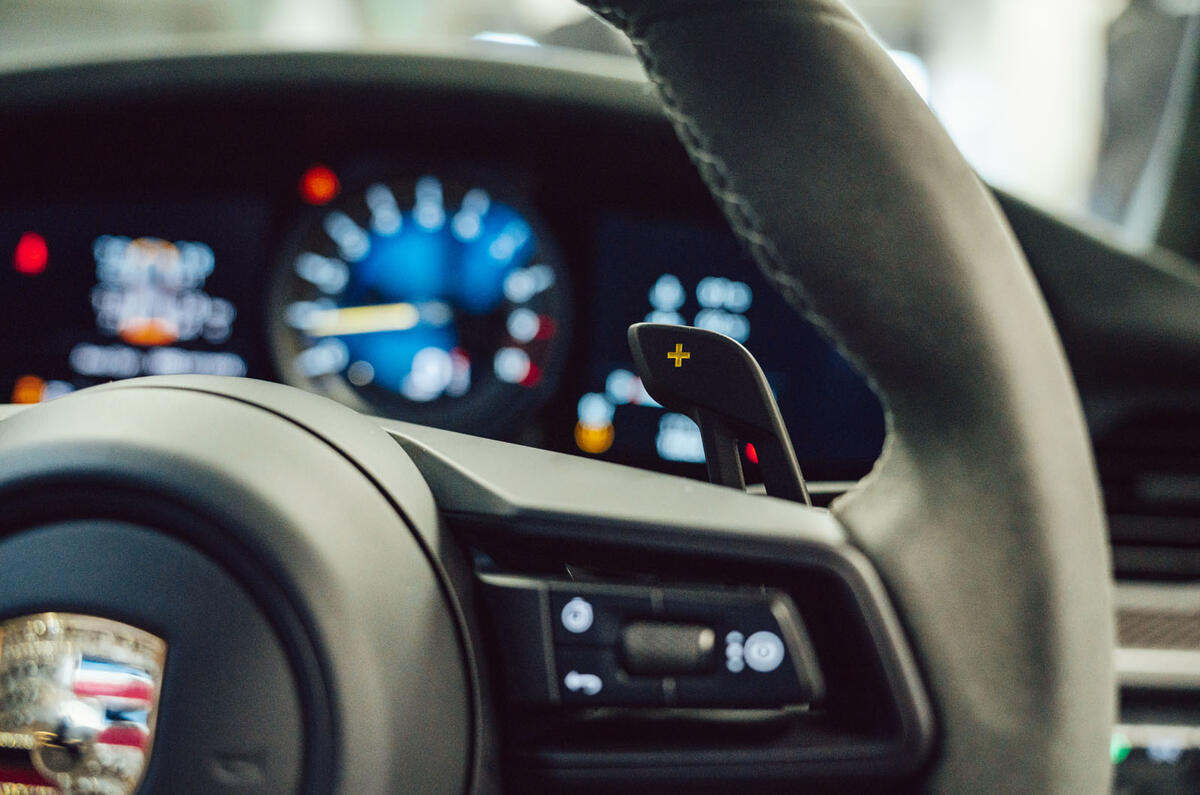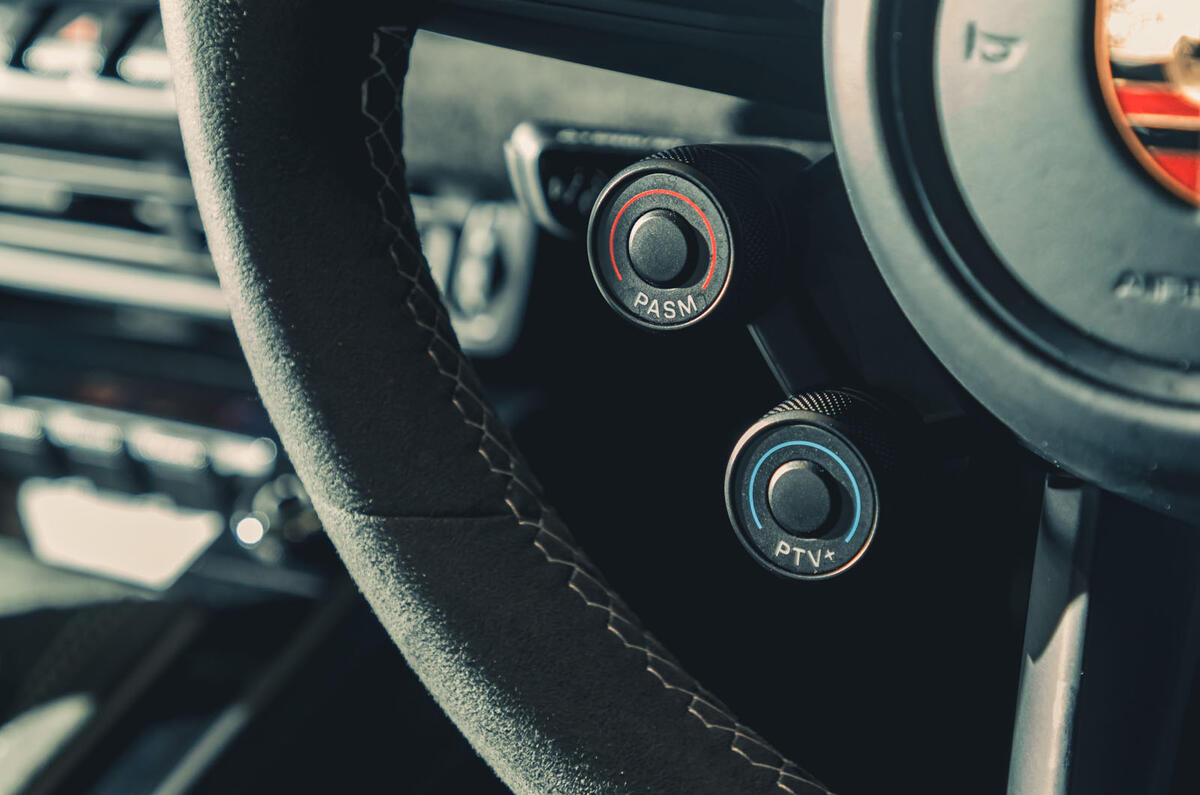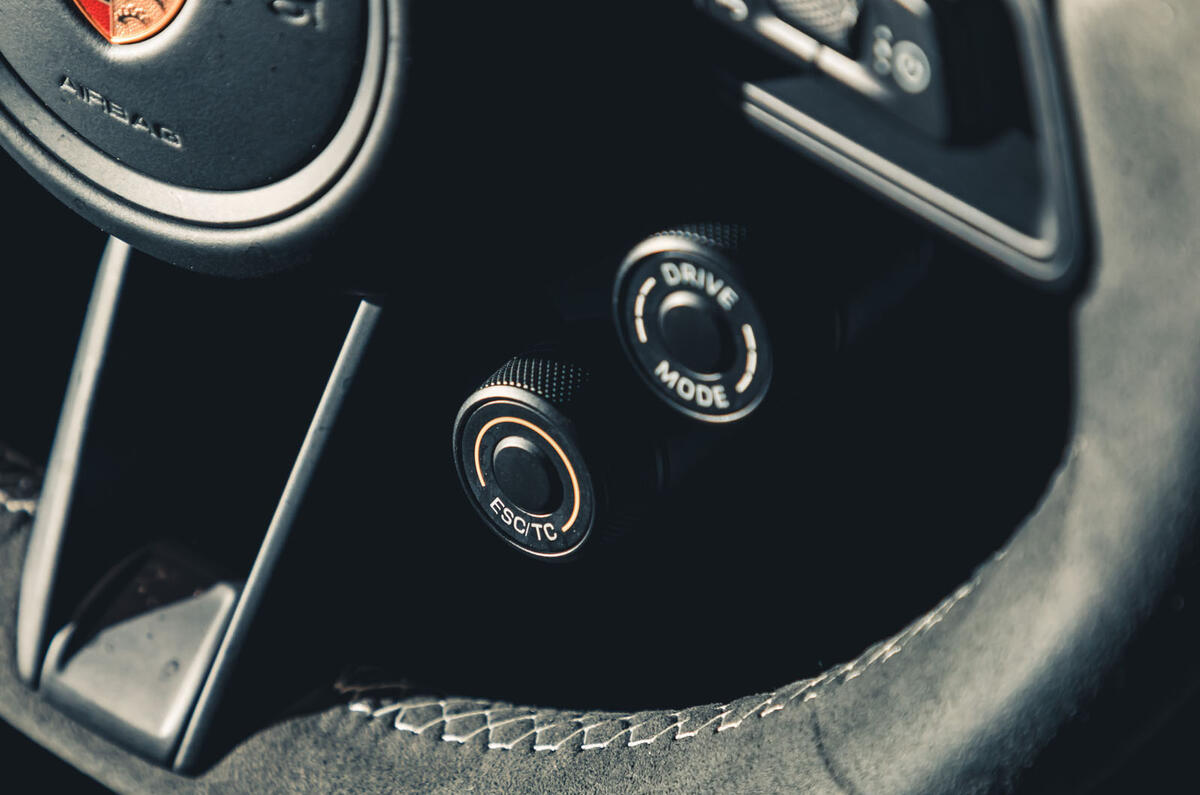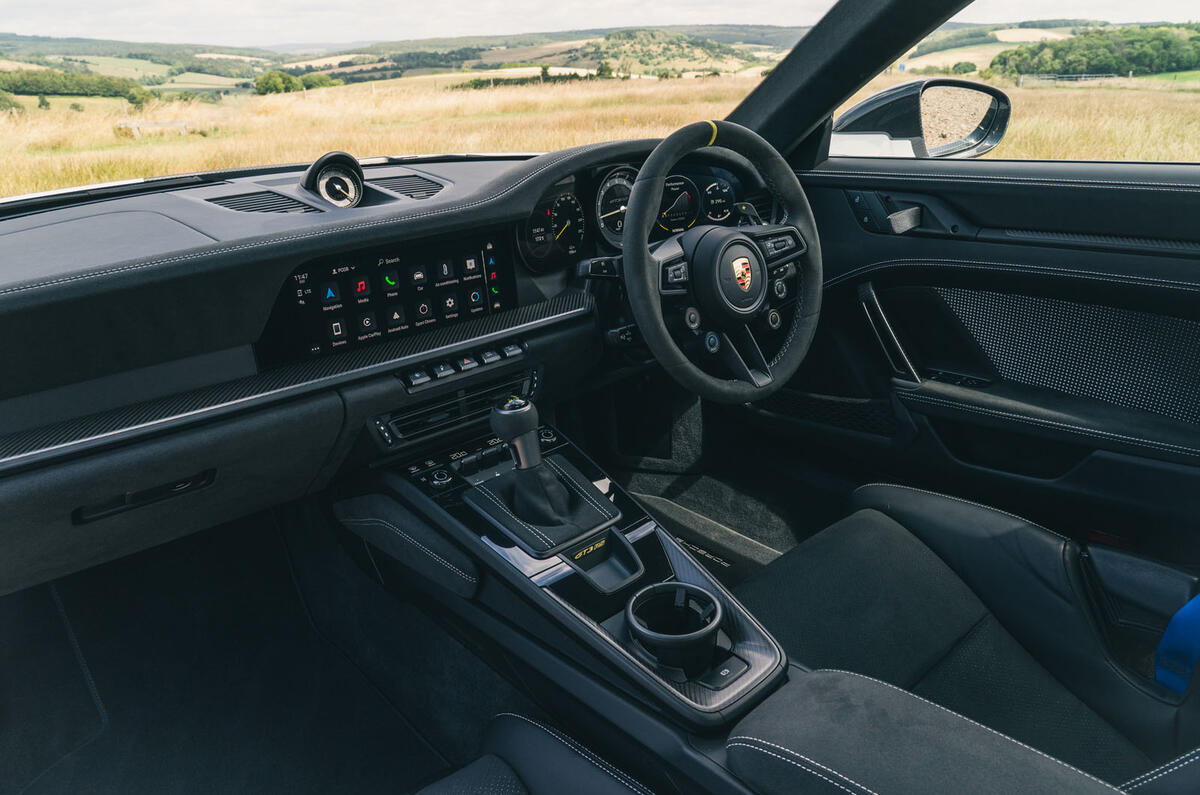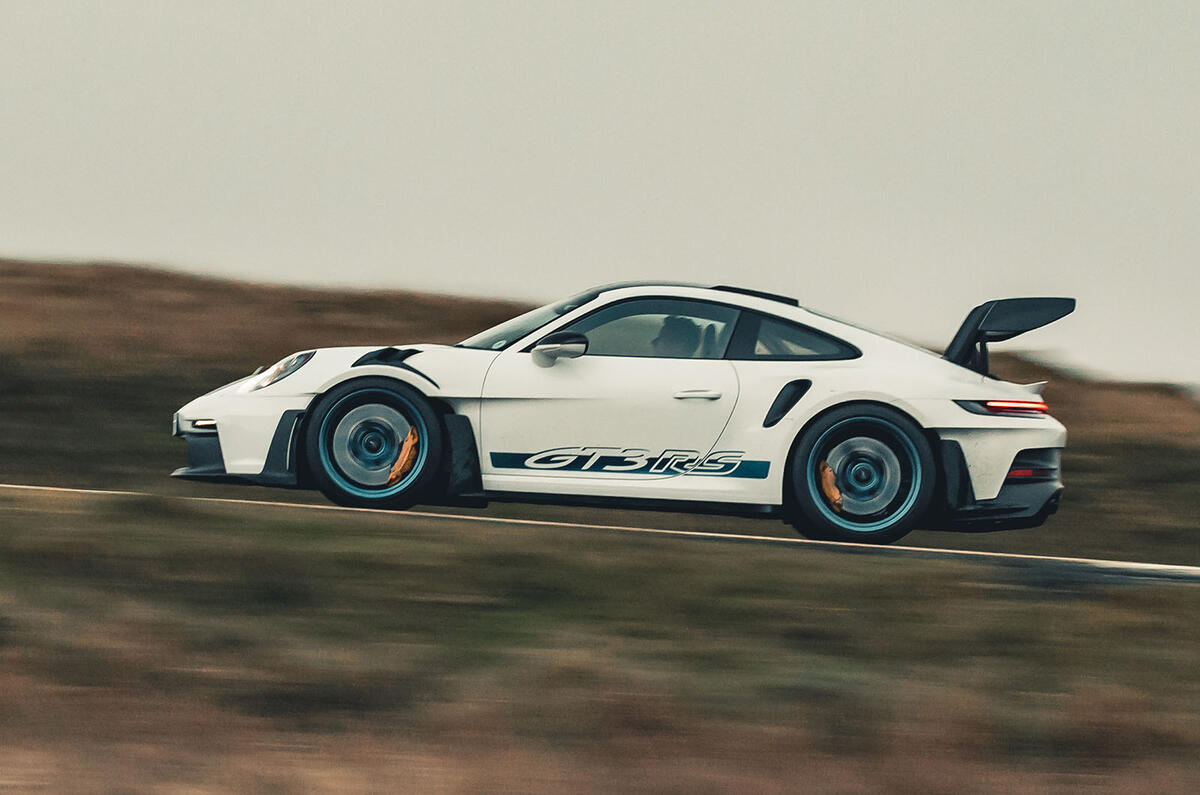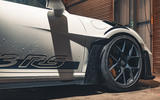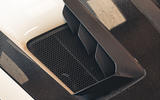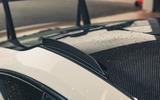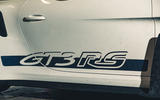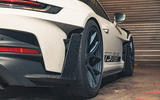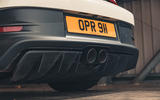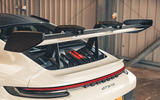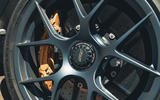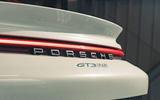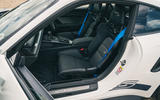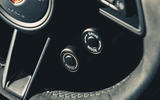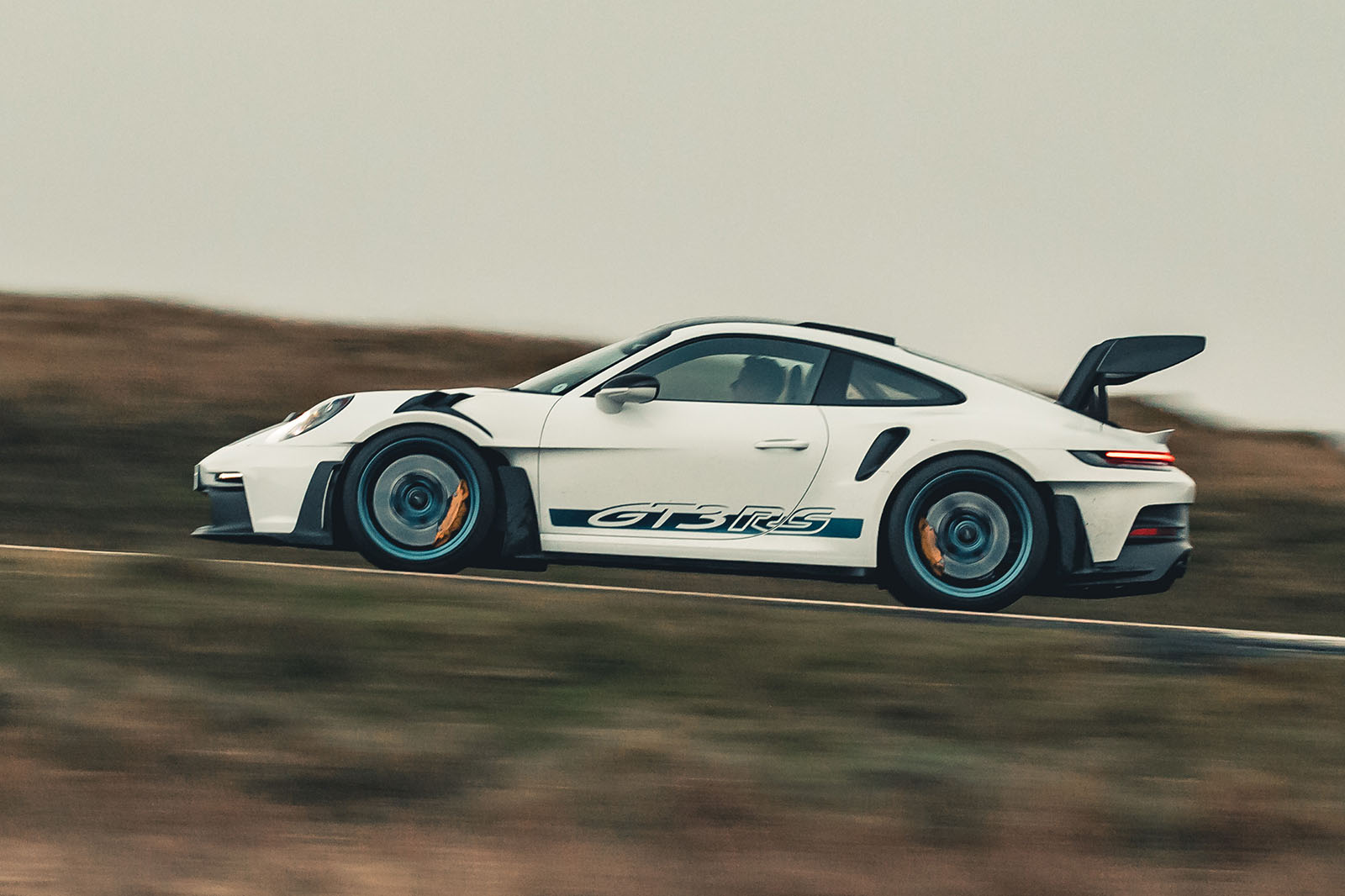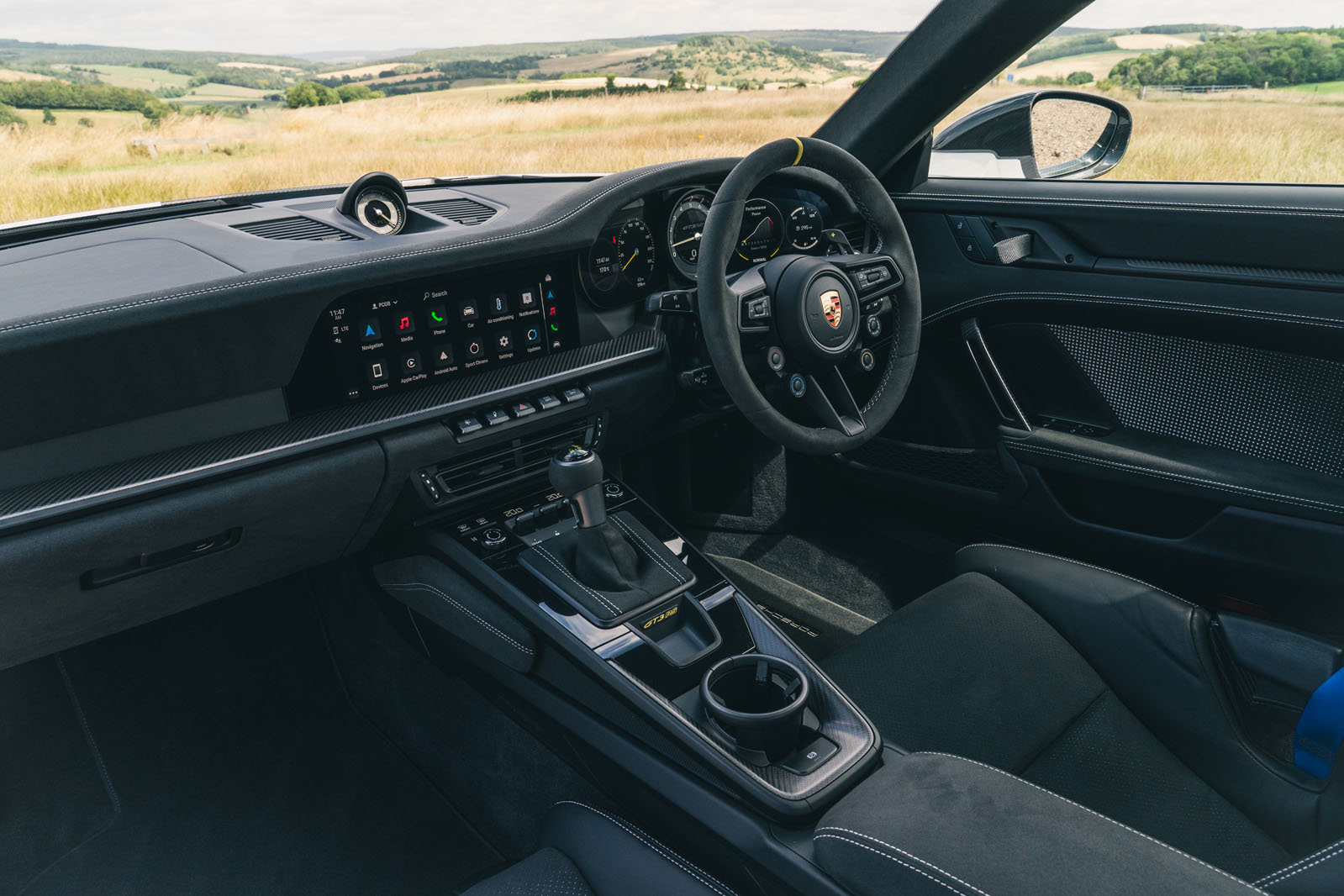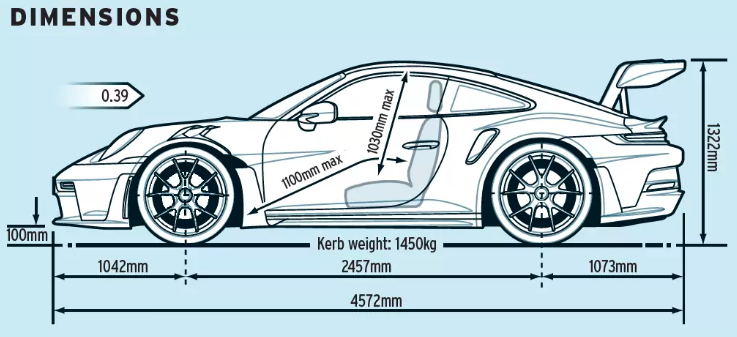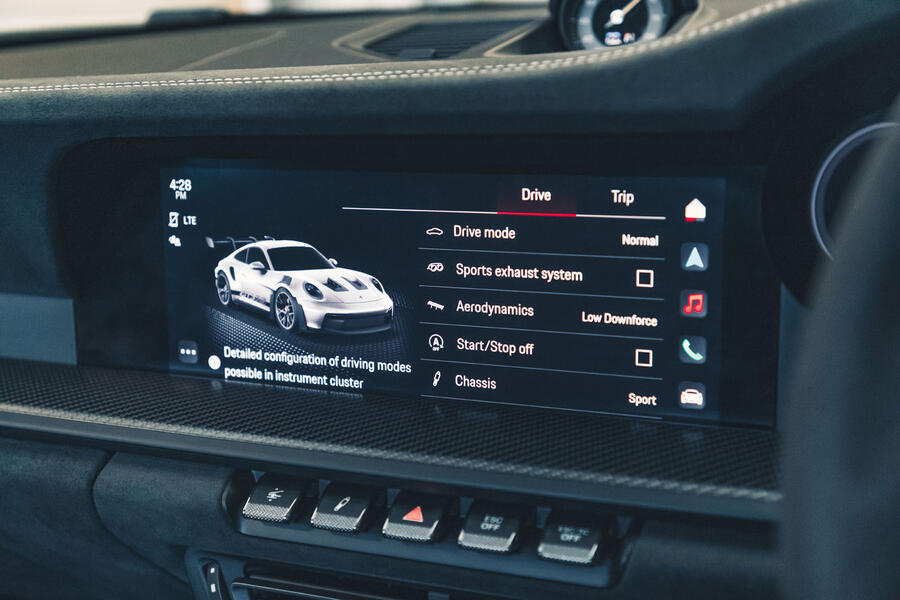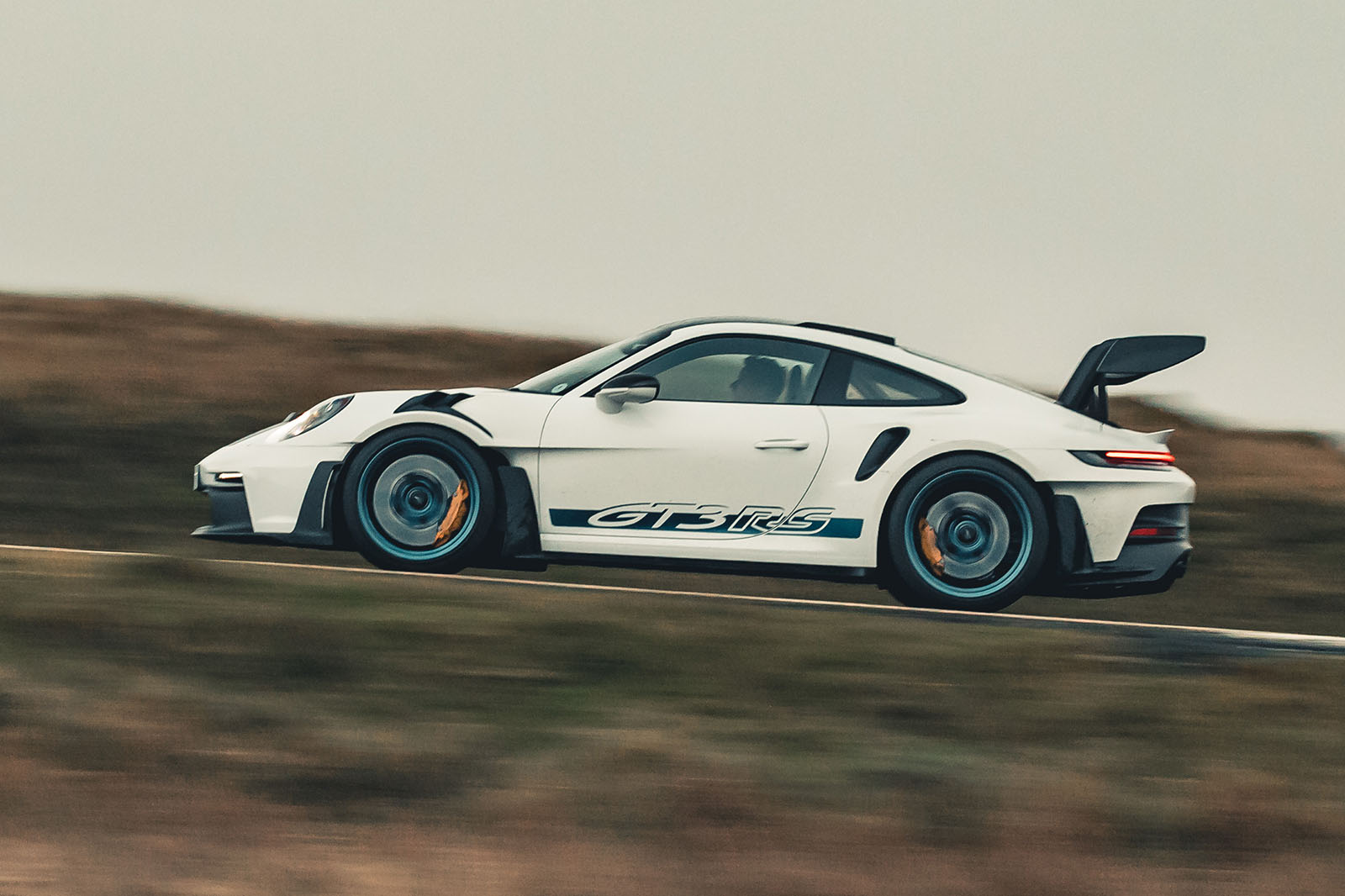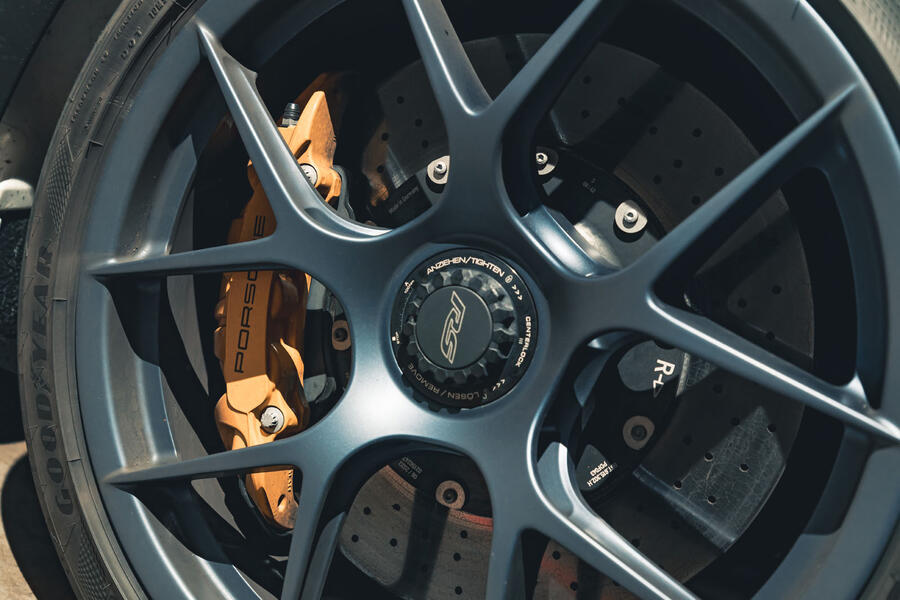Straight-line performance and character in the GT3 RS is nearly a mirror image of the GT3’s, meaning the power delivery has a divine linearity about it.
There is also pin-sharp throttle response and occupants are treated to that distinctive, intake-generated fizz-wail as this engine approaches about 7000rpm. Things only intensify through the head room that exists thereafter, the noise hardening into a clenched fist of screaming metallic song at 9000rpm. Letting an RS rip is never anything less than memorable.
And that’s just as well. With peak torque of 343lb ft arriving at 6300rpm and 518bhp available only at 8500rpm (100rpm higher than in the GT3), this is an engine that needs to be exercised, despite the marginally shorter final drive fitted to the RS. On an enjoyable road, any gear above third – which tops out at 105mph – slightly neuters proceedings, although this isn’t an issue on track, where the car thrives, feeling utterly at home.
Porsche’s GT model-specific PDK ’box is by now familiar, shifting with an alacrity that leaves the flow of torque to the rear wheels essentially uninterrupted. It’s an unsung hero, rev matching with nothing less than sublime accuracy, and in Weissach trim it is controlled via magnesium shift paddles with new haptic magnetic elements derived from those in the 911 GT3 Cup race car. The action is meatily sprung yet clinical and accompanied by an emphatic click. It really does feel ‘motorsport’.
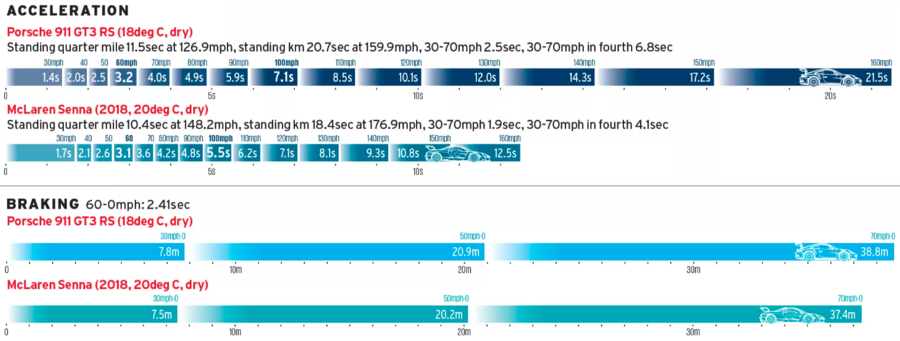
Numbers? For a non-turbo car weighing 1476kg as tested (with a full tank), the GT3 RS is explosively quick. It sprinted to 60mph in 3.2sec and reached triple figures in 7.1sec. Granted, this is behind more powerful alternatives from Ferrari, Lamborghini and McLaren, but RS products have never been about straight-line pace alone and this is particularly true of the new GT3 RS, whose aero limits top speed to 184mph (versus the GT3’s 198mph).
In any case, the Porsche has a secret weapon when it comes to shedding speed. Its braking performance is exceptional – particularly above 50mph, when all that downforce comes to bear. In dry but cool conditions, just 38.8m was required to come to a standstill from 70mph. This puts the Porsche in the realm of considerably lighter, even more uncompromising and equally aero-focused machines such as the Dallara Stradale and McLaren Senna.
On the road, this is of little relevance, but on the track? The ability of the GT3 RS to maintain stability while dive-bombing into corners on a forcible trailing brake can be mind-blowing.
Track Notes (Anglesey Circuit, International)
No road-legal Porsche 911 has had track driving so central to its remit. However, as a downforce car with deep configurability in its suspension and driveline, the RS isn’t as simple to hop aboard and start enjoying as the regular GT3.
You need to acclimatise to what the downforce can do in the fast corners, and the sometimes shocking amount of mid-corner throttle it permits even in slower corners. It’s the same with braking: from big speeds, you can hammer the pedal with what seems like impunity.
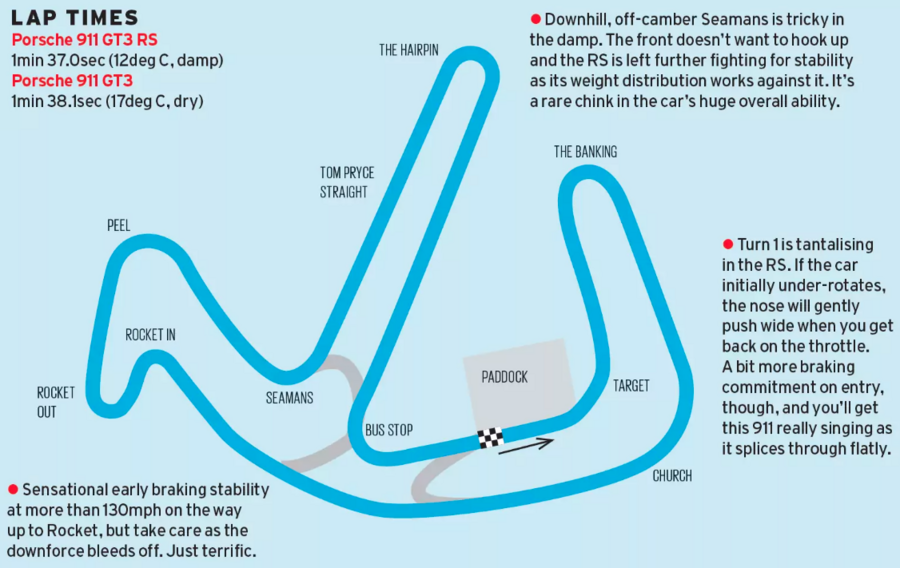
Gradually, you get on terms with it – with its confounding precision even under extreme dynamic duress; with its ultimately benign, front-limited balance that encourages you to push. So you lap, and you lap, and you lap.
As for lap time, Porsche claims the RS is 10sec quicker than the GT3 on the Nürburgring Nordschleife. On the shorter, slower Anglesey Circuit, our car went 1.1sec quicker than the GT3, and did so in tricky conditions, with plenty of damp around. Impressive.


